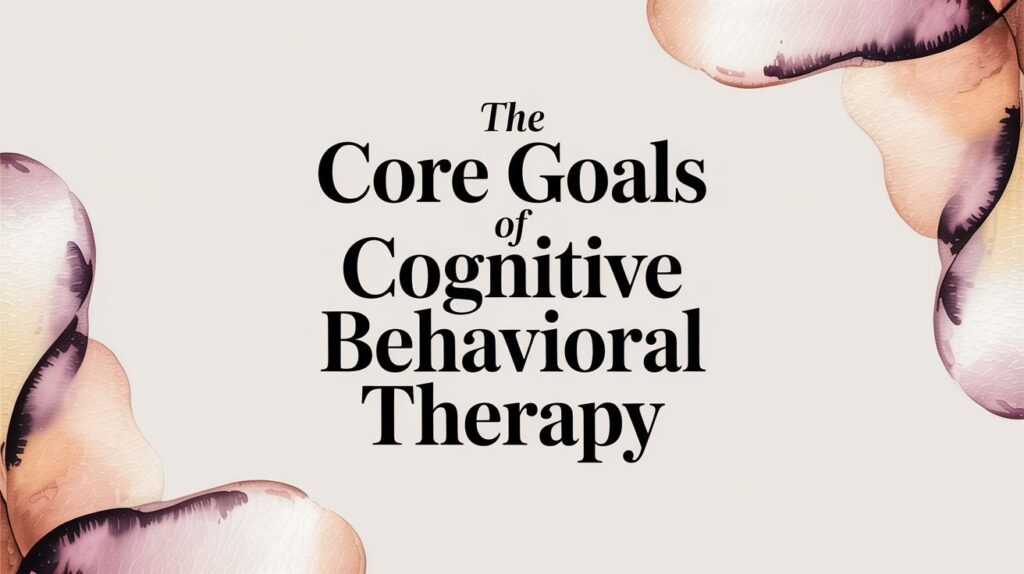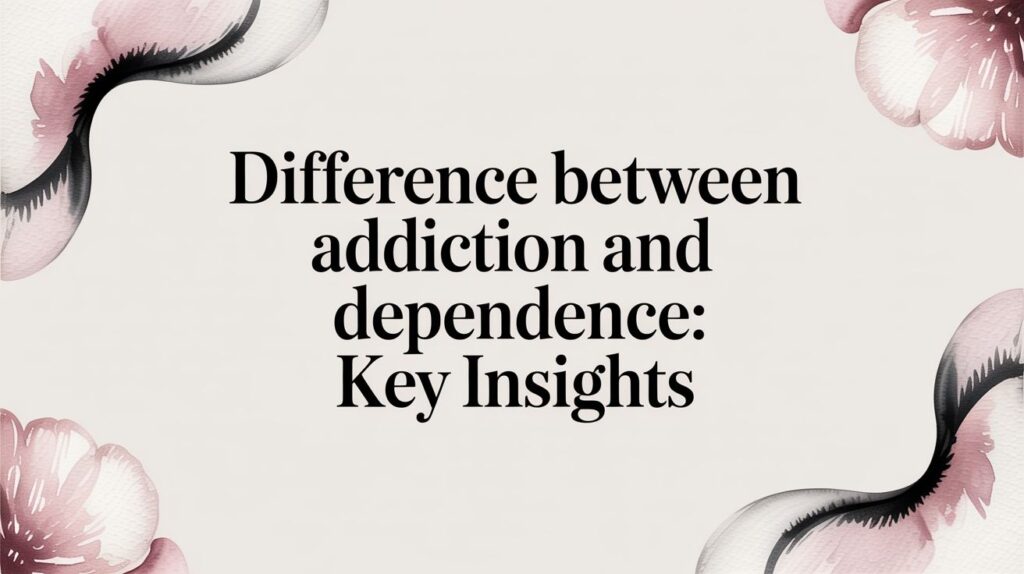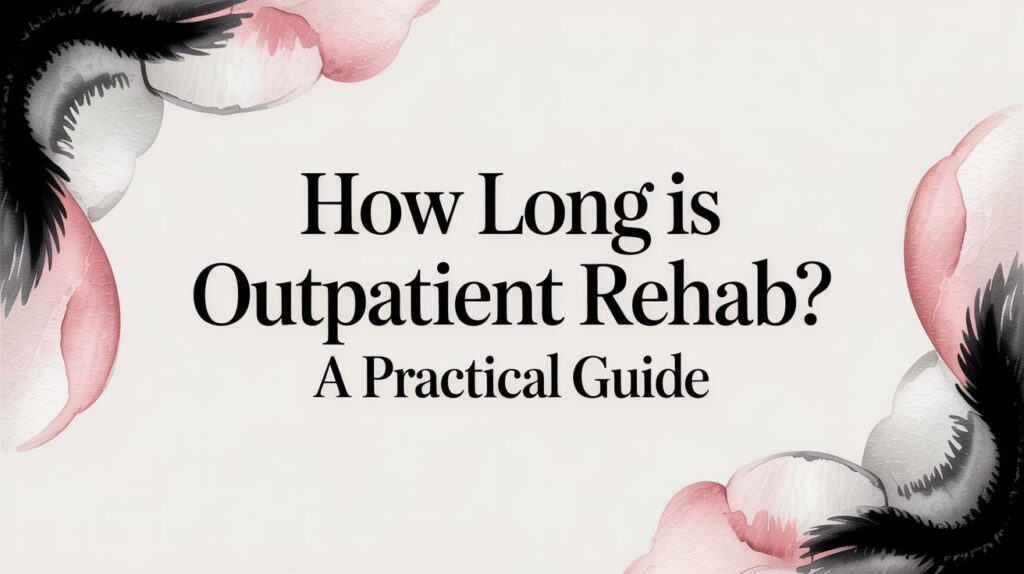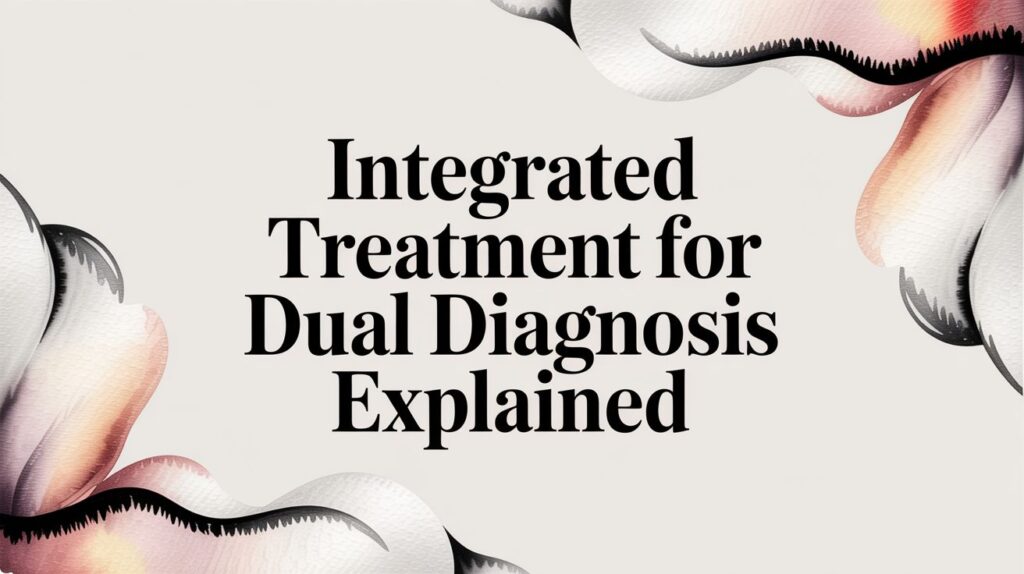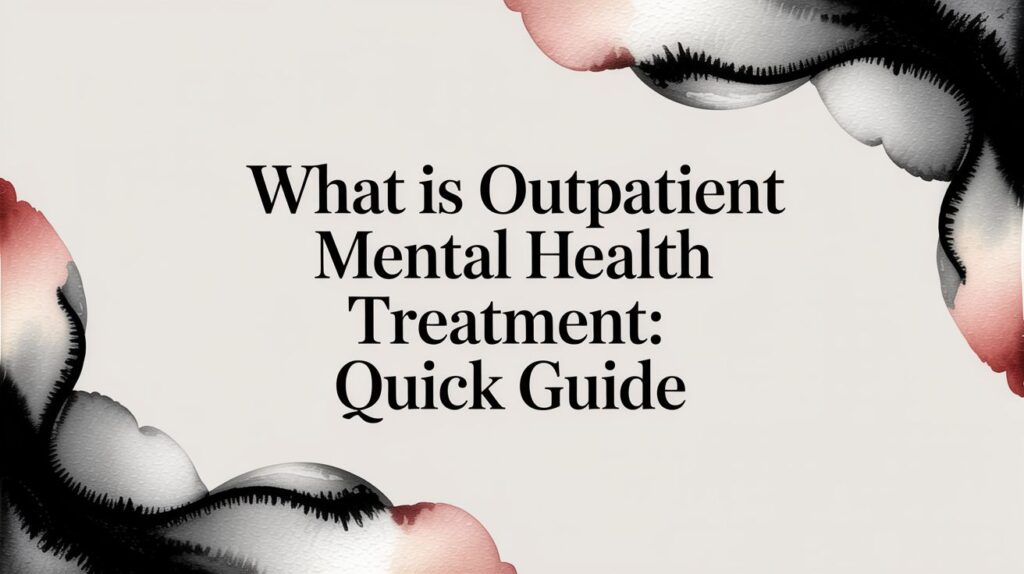The Goals Of Cognitive Behavioral Therapy Focus On Reducing Distress, Reframing Unhelpful Thoughts, Building Coping Skills, And Preventing Future Relapse. These aims create a clear, step-by-step framework that ultimately empowers you to become your own coach in day-to-day life.
Primary Goals Of Cognitive Behavioral Therapy
Imagine CBT as the software running your mind’s operating system. Faulty code—automatic negative thoughts—can trigger crashes in the form of anxiety, depression, or addictive urges. By spotting and correcting those “bugs” early, you restore smoother, more reliable mental functioning.
- Symptom Reduction: Immediate relief through strategies like behavioral activation for depression and gradual exposure for anxiety.
- Cognitive Restructuring: Pinpointing and challenging distorted mental filters to arrive at balanced, realistic viewpoints.
- Skill-Building: Introducing practical tools—relaxation exercises, assertive communication scripts, and problem-solving steps.
- Relapse Prevention: Crafting personalized plans that flag triggers, track warning signs, and reinforce healthy patterns long after therapy ends.

This visual shows how immediate relief tools, thought-reframing filters, and practical toolkits converge around one core aim: ongoing self-management.
Here’s a quick summary of the main objectives you’ll tackle in CBT:
The Four Pillars of CBT Goals
| Goal Pillar | What It Means in Practice |
|---|---|
| Symptom Reduction | Immediate relief through techniques like exposure and behavioral activation |
| Cognitive Restructuring | Reframing distorted thoughts for a realistic outlook |
| Skill-Building | Learning coping methods such as relaxation, assertiveness, and problem-solving |
| Relapse Prevention | Crafting relapse plans to recognize triggers and maintain improvements |
This table breaks down exactly what you can expect as you work through each objective.
Research consistently finds clients achieve 30–50% symptom reduction within 6–12 weeks of regular CBT sessions. That clear progress keeps motivation high and makes outcomes easy to measure.
For instance, Cognitive Behavioral Therapy specifically for social anxiety shows how these goal pillars help break the cycle of fear that holds people back in social settings.
Implementing CBT At Altura Recovery
At Altura Recovery, we weave CBT into our outpatient programs for individuals facing addiction and co-occurring mental health challenges. Licensed clinicians guide you through every step, from defining goals to tracking progress.
In the first two sessions, you’ll set personalized objectives and agree on measurable milestones. By session three, homework assignments and real-world experiments ensure you’re practicing skills outside the therapy room. Then, around session eight, many clients notice a shift in how they handle stress and setbacks—early wins that fuel further growth.
This structured, clinically grounded approach keeps you engaged and steadily moving toward lasting change throughout your outpatient care.
Reducing Distressing Symptoms
When you first walk into CBT, you want to tackle what’s screaming for attention right now. Think of it like icing a fresh injury before you rebuild strength—you calm the pain to lay the groundwork for real progress. Anxiety, depression, and PTSD often feel like a storm, so those early wins matter more than you’d think.
CBT zeroes in on urgent symptoms through techniques you can apply right away.
- Exposure Therapy gradually guides you toward situations you’d normally avoid.
- Behavioral Activation nudges you into small, mood-boosting activities.
- Relaxation Training taps into breathing and mindfulness exercises to soothe distress.
- CBT-I uses non-drug strategies to help you sleep better and wake up refreshed.
“Reducing symptom frequency or intensity makes deeper cognitive work feel achievable.”
Imagine cutting panic attacks in half. That simple shift can restore belief in your own resilience. And those early victories aren’t fleeting—studies show lasting payoffs.
Longitudinal data reveals 43% of high-intensity CBT patients saw at least a 50% drop in depression after 46 months, versus 27% with standard care—a 59% greater improvement.
Learn more about long-term CBT benefits on depression
Setting Measurable Outcomes
CBT turns vague hopes into clear targets. For example, tracking your weekly panic attacks lets you plot progress on a simple chart. Most people notice shifts in as little as 6 to 12 weeks.
Depression scores often slide by 30–50% during that span with steady practice. And you don’t have to guess how you’re doing—you use tools like:
- Beck Depression Inventory to rate mood changes
- Anxiety Diaries for logging triggers and coping responses
- Cognitive Behavioral Therapy for Insomnia (CBT-I) sleep logs to measure shut-eye improvements
That level of tracking brings patterns into focus fast, which accelerates relief and keeps you motivated. In addiction recovery, these wins often translate into fewer cravings and less impulsivity—momentum that fuels deeper cognitive work.
Examples In Real Life
Take someone battling social anxiety. They might begin by stepping into a small group for five minutes. That single moment of calm can light the fuse for bigger challenges.
Here’s what progress sometimes looks like:
- Panic attacks drop from four sessions to two each week
- Hours spent feeling depressed fall to an average of three per day
- Better sleep shows up two nights running in your sleep log
Each victory boosts your sense of agency. Your brain starts to learn change is possible.
How Altura Recovery Uses CBT
At Altura Recovery, symptom relief is woven into every stage of our outpatient programs. From your very first visit, clinicians guide you through exposure, activation, and symptom monitoring.
By session two, you’ll have custom symptom logs and weekly targets on paper. Homework between meetings becomes a chance to rehearse new skills in real life.
Our outpatient care package includes:
- Individual CBT sessions for quick symptom relief
- Group workshops teaching exposure and behavioral activation
- Digital platforms for real-time symptom tracking and expert feedback
- Family sessions that build accountability and support early gains
Within a month, many patients report feeling noticeably calmer and more in control. These initial wins set the foundation for tackling negative self-beliefs, reframing thought patterns, and mastering new life skills.
Altura’s integrated approach aligns symptom goals with relapse prevention, creating a unified path to Real Healing, Real Growth, and Real Freedom. Early relief isn’t just a warm-up—it’s the first step toward lasting recovery.
Ready to start feeling better right away? Altura Recovery’s CBT program is here to help you manage distress from day one.
Get started today. Now.
Mastering Cognitive Restructuring
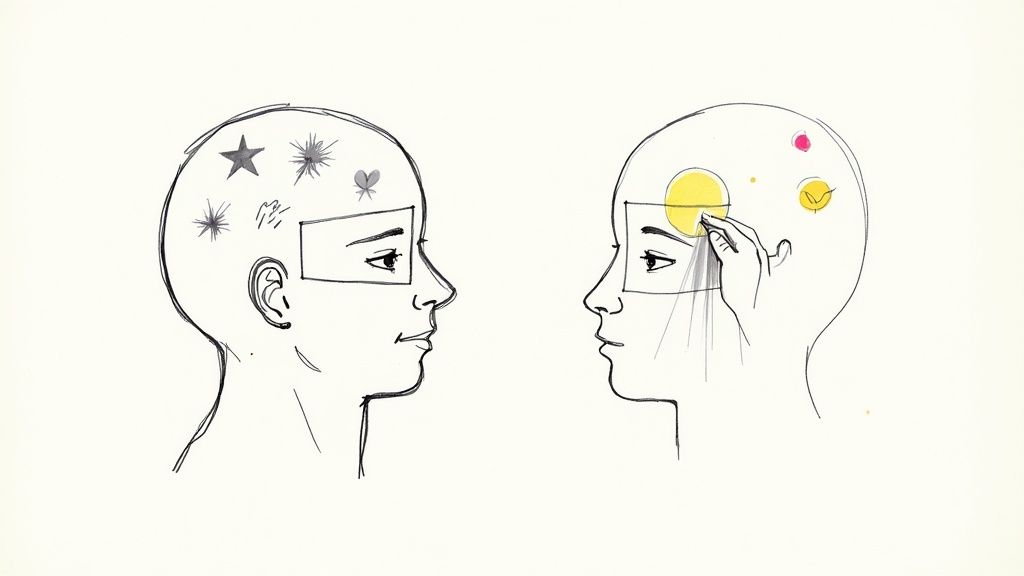
Imagine your brain looking through a tinted lens—every thought slightly off-kilter. Cognitive Behavioral Therapy (CBT) works like a gentle cleaning solution, removing smudges so you see reality more clearly.
First, you learn to catch when that lens distorts facts. A small hiccup can feel like total defeat, but these patterns—known as cognitive distortions—aren’t permanent flaws. They’re habits you can unlearn.
Instead of forcing positivity, CBT guides you to name each distortion, challenge its grip, and replace it with balanced thinking.
- Catastrophizing: expecting the worst-case scenario
- Black-and-White Thinking: viewing situations in absolutes
- Overgeneralization: applying one event to every context
- Personalization: blaming yourself for things outside your control
- Emotional Reasoning: treating feelings as solid facts
Identifying Distortions
Labeling a distortion changes it from a vague worry into a clear target. For example, swap “I failed this test, so I’m a total failure” with “I didn’t pass this one exam, and I can refine my study strategy.”
With practice, you’ll spot distortions across moods and situations, giving yourself space to pause before accepting any thought as truth.
| Distortion | Cleaning Strategy |
|---|---|
| Catastrophizing | Rate likelihood on a 1–10 scale before assuming worst |
| Black-and-White | Soften with words like “sometimes” or “often” |
| Overgeneralization | Find real-life exceptions to your conclusion |
| Personalization | List external factors beyond your control |
Steps To Reframe Thoughts
You’ll use a five-step sequence during sessions and at home:
- Notice the automatic thought.
- Gather evidence for and against it.
- Create a more realistic statement.
- Rate the new thought’s believability.
- Track your mood over the next day.
After about 6 to 8 sessions, many clients report a 30–50% reduction in self-critical thinking once these steps become second nature.
Applying Restructuring To Addiction
When cravings surge, your mental filter can amplify urges: “I can’t cope without using.” CBT breaks that belief down by reviewing times you managed stress in healthy ways.
Co-occurring depression often leads to, “Nothing I do matters.” Testing that thought—say, by recalling support-group wins—helps you build a more accurate story.
“Thoughts aren’t facts. They’re hypotheses to test,” explains one Altura Recovery clinician.
Measurable Outcomes
- Reduction in craving intensity by 40% within 4 weeks
- Fewer depressive self-statements recorded in thought logs
- Increase in belief in personal agency from 3 to 7 out of 10
How Altura Recovery Guides You
At Altura Recovery, licensed clinicians lead one-on-one and group filter-cleaning exercises. Cognitive restructuring is woven into every phase of outpatient care.
Digital thought logs sync with our mobile app, letting you and your therapist spot distortions in real time. Weekly homework cements each new skill between sessions.
Measuring Your Progress
Your thought records become a visual map of small victories. Plot daily mood ratings alongside distortion counts to uncover trends and celebrate change.
- Track distortion frequency weekly
- Rate mood daily on a 1–10 scale
Consistency breeds results. Mastering cognitive restructuring hands you a realistic perspective you can carry long after therapy ends.
Building A Toolkit Of Behavioral Skills
CBT bridges thoughts and actions, handing you practical tools for real-world challenges. Imagine it as learning a new dialect—the dialect of managing emotions and solving problems on the fly. Your therapist introduces core skills, then backs them with clear examples to try in the moment.
Homework isn’t busywork. It’s what turns a skill from a classroom concept into a reliable habit outside sessions.
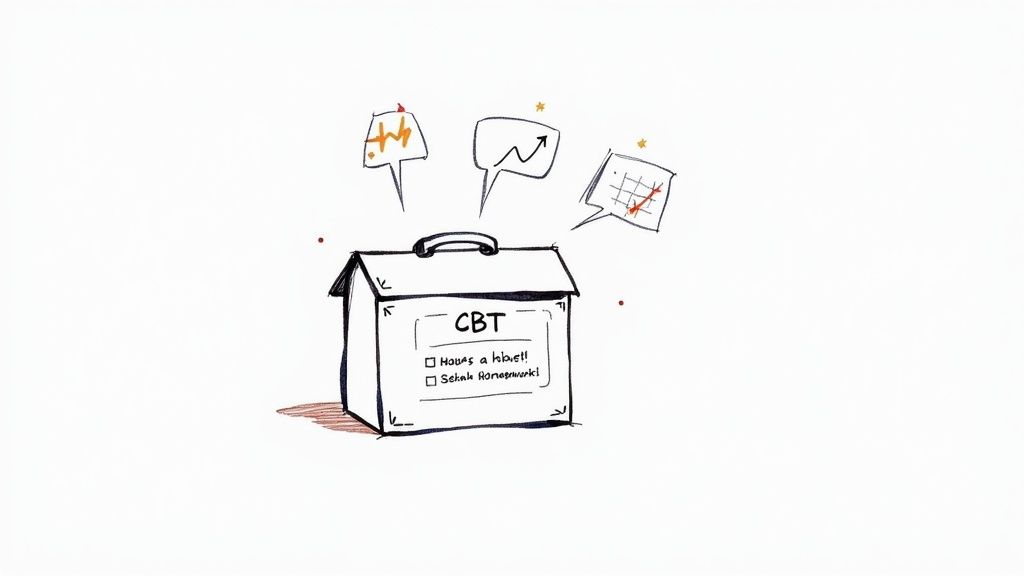
Key Behavioral Skills
CBT arms you with coping strategies you can deploy immediately.
- Relaxation Techniques use deep breathing and progressive muscle stretches to dial down tension.
- Assertiveness Training shows you how to set boundaries with clear “I” statements.
- Communication Strategies teach active listening and straightforward expression to prevent misunderstandings.
- Problem-Solving Framework walks you step-by-step through spotting triggers and brainstorming solutions.
Session by session, these skills form your personal toolbox. And by practicing at home, you build confidence in tackling stress wherever it appears.
“Skill practice outside therapy is where real progress happens,” says a licensed clinician at Altura Recovery.
Practicing Steps Each Day
A simple cycle helps glue these tools into your routine.
- Notice a trigger and pause before reacting.
- Pick one skill from your toolbox—say, deep breathing.
- Rate its impact on your mood with a quick 1–10 scale.
- Note what worked, what didn’t, and adjust next time.
- Log your entry to track growth over weeks.
This sequence hands back control and fosters self-reliance. Altura Recovery complements it with digital logs and tailored feedback from clinicians. Check out our guide on what to say to someone in rehab to see conversation examples.
- Set reminders for typical stress moments.
- Reflect weekly on small wins and roadblocks in a journal.
- Add new skills to your toolbox as you learn them.
Tracking makes progress visible and boosts accountability.
Measuring Outcomes Over Time
Most clients notice real shifts within 4 to 6 weeks of consistent practice. A recent study found 70% of participants felt more confident handling triggers after two months. By charting skill usage alongside mood ratings, you reveal patterns that guide your next steps.
| Metric | Example Outcome |
|---|---|
| Skill Usage | Increase from 2 to 7 times per week |
| Confidence Rating | Rise from 3 to 7 out of 10 |
Integrating Skills In Routine
Embedding techniques into your day makes them second nature.
- Schedule a 5-minute breathing break.
- Role-play a tough conversation with a friend or coach.
- Share wins and challenges with your clinician to refine your approach.
Over time, these practices build lasting competence and self-reliance. At Altura Recovery, structured logs and ongoing guidance turn these tools into reliable self-help.
Practical Examples
Applying skills in everyday situations cements real change.
- A client under work pressure used assertiveness to request extra support, easing overwhelm.
- Another individual practiced relaxation before bed, cutting insomnia from rumination.
After months of mixed skill use, cravings dropped by 45% and mood stability improved. Each successful rehearsal deepens resilience long after sessions end.
Next Steps
Choose one skill to focus on this week—perhaps two minutes of deep breathing before lunch. Then schedule micro-practice moments daily and review progress with your therapist. Small, steady wins are the foundation of lasting change.
Improving Your Overall Quality of Life
Driving through life with unhelpful thoughts and habits is like setting off on a road trip with a stalled engine: you might get moving, but you’ll break down before your destination. Cognitive behavioral therapy goes beyond easing distress—it focuses on restoring your capacity to live a full, meaningful life.
Together with your clinician, you’ll choose goals that truly matter—whether that means reentering the workforce, rebuilding friendships, or diving back into hobbies you once loved. For someone facing social anxiety, that goal might be attending a friend’s gathering and staying for 30 minutes, using gradual exposure to make each minute feel achievable.
- Work Engagement: Log hours or tasks each week to track growing confidence in professional settings.
- Social Participation: Record the number and length of social outings to connect cognitive shifts with real interactions.
- Leisure Revival: Set milestones—like completing a creative project or joining a club—to anchor progress in activities you value.
Linking each target back to CBT exercises ensures your therapy stays rooted in real-world improvements, not just lower symptom scores.
Measuring Progress
CBT thrives on clear, measurable steps. You’ll chart your weekly social activities or work responsibilities so you can literally watch your daily functioning expand.
Many clients notice meaningful change within 6 to 12 weeks, with each small victory—such as staying an extra five minutes at a meeting—building momentum toward broader goals.
“Real-world milestones anchor therapy in daily life and fuel ongoing growth.”
Here’s a simple table to track key metrics:
| Metric | Baseline → Goal |
|---|---|
| Social Outings per Week | 1 → 3 |
| Work Tasks Completed | +20% weekly increase |
| Hobby Hours per Week | +2 hours |
Using thought logs, activity charts, and numbered targets creates feedback loops that celebrate every step forward and guide what comes next.
Altura Recovery Approach
At Altura Recovery, we weave CBT goals into every phase of our outpatient programs. In the first two sessions, you and a licensed clinician co-create specific, meaningful targets and agree on how to measure progress.
Homework assignments and in vivo experiments bridge the gap between the clinic and your everyday life. Learn more about sober living options in our guide to sober living near me.
Most clients begin reclaiming employment roles or social circles within 8 to 16 weeks, depending on co-occurring conditions. When addiction is part of the picture, coupling CBT with skill-building, structured support, and relapse-prevention strategies cuts the risk of setbacks and reignites purpose.
Recent meta-analytic evidence—spanning 494 systematic reviews and 221,128 participants—reported a standardized mean difference of 0.23 in health-related quality of life across 27 major conditions. Read the full research about CBT quality of life findings on Cambridge.org.
By centering on functional restoration as much as symptom relief, CBT at Altura helps you get back on life’s road—stronger, more resilient, and ready to enjoy each mile.
Your renewed function becomes the ultimate measure of true recovery.
Creating a Long-Term Relapse Prevention Plan
Your work in therapy lays the groundwork; a relapse prevention plan makes sure that foundation holds strong long after sessions end. Think of it as drafting a fire-safety blueprint for your mind. You learn to spot the first wisp of smoke—those thoughts or situations that fan the flames of craving—and you’ve got tools ready to extinguish sparks before they spread. This final phase of CBT hands you the reins to manage your mental health with confidence.
Identify Your Personal Triggers
Triggers often hide in everyday stressors, emotional shifts, or familiar places.
- Situations tied to past substance use or overwhelming stress
- Strong feelings like anger, sadness, or restlessness
- Social gatherings that once revolved around drinking or drug use
- Visual cues such as seeing paraphernalia or certain locations
Spotting these triggers early turns vague worries into clear action points.
Build Your Relapse Prevention Steps
A solid plan lays out concrete coping strategies, emergency contacts, and backup options:
- Identify Personal Hazards by listing thought patterns and environmental cues
- Track Early Warning Signs in a mood diary or craving log
- Select Coping Strategies such as mindfulness breaks, brisk walks, or calling a sponsor
- Build Your Support Network by naming friends, family, or professionals you can reach out to
- Rehearse Responses through role-plays or mental run-throughs
Breaking the big goals of cognitive behavioral therapy into these steps makes recovery practices second nature.
Measure Long Term Outcomes
Clinical studies report that 61.38 percent of young clients reach remission right after treatment, climbing to 75 percent at six months and settling at 63.64 percent during extended follow-ups. Discover more on these long-term CBT results in the Long-Term Effectiveness of Cognitive-Behavioral Therapy study.
How Altura Recovery Helps
In our outpatient services, relapse prevention isn’t an add-on—it’s woven into every session. Licensed clinicians partner with you to map out your unique triggers, early alerts, coping tools, and go-to supporters.
“When you can independently spot a trigger and deploy a strategy, you’re effectively your own therapist,” explains one Altura clinician.
Learn more about integrated dual diagnosis treatment in our guide to Integrated Dual Diagnosis Treatment. Tracking your milestones and scheduling regular check-ins turns self-management into second nature.
Schedule Regular Plan Reviews
As life shifts, so do your stressors and triggers. Keep your plan current by:
- Setting a monthly check-in with your therapist or coach
- Reviewing logs for emerging patterns and celebrating small wins
- Updating coping techniques when new challenges arise
These routine evaluations stop minor setbacks from snowballing into full relapses.
By designing, practicing, and revisiting your relapse safety plan, you ensure the skills of cognitive behavioral therapy stay active through every stage of recovery. Over time, this long-term roadmap cements your role as the lead architect of your mental wellness.
Common Questions About CBT Goals
Cognitive Behavioral Therapy (CBT) zeroes in on clear, measurable change.
This guide tackles the top questions you’re likely to have before—or right after—your first session.
You’ll learn about timing, mindset shifts, and why practice outside the office matters.
- When to Expect Results covers session counts and progress milestones.
- Balanced Thinking Versus Positivity explains how CBT refines thought patterns.
- Homework in CBT highlights the critical role of practice outside sessions.
- Practical Tips ensures you know what happens in early sessions.
One question surfaces more than any other: How long does it really take to hit those CBT goals?
How Long Does It Take To Achieve CBT Goals
CBT is famously time-limited—no endless talk therapy here.
- Most clients see change within 5 to 20 sessions.
- If you’re working on a specific phobia, you might wrap up sooner.
- When issues overlap—think co-occurring mood or substance challenges—you may plan for extra meetings.
“Progress in CBT is about measurable steps, not indefinite therapy.”
By roughly session 8 to 12, many people notice real shifts in thoughts and behaviors. Tracking week-to-week milestones with your therapist keeps you on course.
Is CBT Just About Positive Thinking
CBT isn’t about forcing a grin or denying reality. Think of it as a mental tune-up: you learn to spot unhelpful thoughts, test them, and recalibrate when needed.
- Identify your automatic negative thoughts
- Weigh the evidence for and against them
- Replace distortions with balanced statements
For instance, turning “I always fail” into “This attempt was tough, but I can adjust my approach.”
Why Is Homework Crucial For CBT Success
Imagine learning a new language but never practicing outside class. CBT homework bridges that gap.
- Thought logs help you catch daily mental filters
- Behavior experiments let you test new responses in real life
- Goal trackers chart how often symptoms appear
This ongoing practice cements small insights into lasting habits.
Practical Tips For First Timers
The opening sessions are like mapping a road trip before you drive. You’ll review your history, spot recurring patterns, and sample tools like thought monitoring and simple relaxation techniques.
Next, you and your therapist craft a personalized action plan—what you’ll do together in sessions and how you’ll practice between visits.
Read how trauma-informed care complements CBT in our guide on Trauma-Informed Therapy.
Tips To Track Your CBT Progress
Nothing motivates like seeing a steady climb on a chart. Keep score with:
- Weekly symptom logs rated on a 1–10 scale
- Thought diaries to tally unhelpful patterns each day
- Behavior checklists noting when you use new coping skills
Over 6 to 12 weeks, most clients record 30–50% improvement in symptom scores. Share these numbers with your clinician weekly to steer your treatment.
Ready to take charge of your mental health? Reach out to Altura Recovery to learn how CBT can work for you.

